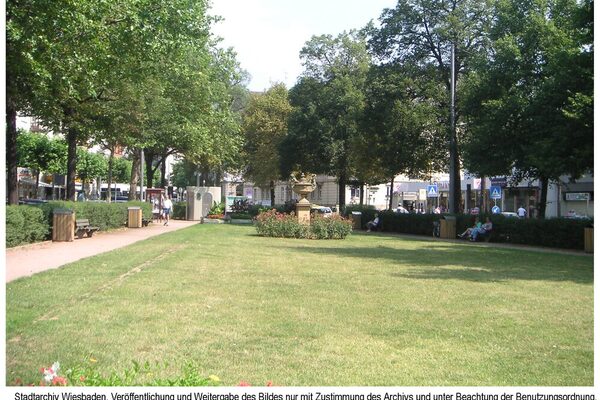Robert Krekel plant
The approximately 3,500m2 Robert-Krekel-Anlage in the center of Biebrich in the acute-angled triangle between Rathausstrasse and Kaiserstraße (now Straße der Republik) was opened in 1901 as Wilhelmsanlage, renamed Friedens-Anlage a few years later and given its current name in 1980 after the local politician Robert Krekel.
The centerpiece is the fountain with the fountain goddess Galatea, a figure from ancient mythology, who balances a shell on her head as a fountain bowl and rides a mythical creature - half Triton, half centaur. Dr. Eugen Dyckerhoff commissioned the sculptor Friedrich Moest to create the fountain figure in 1871 to showcase the possibilities of the new material concrete. With its twin sculpture, which was erected in 1869 in the Grand Ducal Palace in Karlsruhe (today's seat of the Federal Court of Justice), the Biebrich Galatea sculpture is the first successful and permanent open-space sculpture in stamped concrete. It was donated to the town of Biebrich in 1900. The entire fountain was also restored. Other works of art in the park include a vase originally donated by Eugen Dyckerhoff for Herzogsplatz (1907), an ornamental fountain and a memorial to those returning home to remember the horrors of the Second World War with the inscription "Humanity is the last refuge of freedom", which was created by Wiesbaden artist Alfred Widmer in 1966.
The entire site had been completely destroyed during the Second World War and was reduced to a pile of rubble. The area was restored from 1947. Today, small local markets are held in the Robert Krekel grounds every year in the fall and at Christmas.
